Sacred By Waste is located in the Human-evacuated Zone in Fukushima, where the radiation accident occurred because of the earthquake and tsunami in 2011. This project investigates a new type of memorial and sacred landscape belongs to Japan’s cultural history especially sacred placemaking. As a memorial, created mounds made of abandoned materials and pre-contaminated soils becomes visual indication of history of the site and reconnects people to the lands after their long absence. Memorial of abandonment is not a solution. Through the journey to the mounds, visitor reflect on the vulnerability of the landscape and recognize that landscape before and after them.
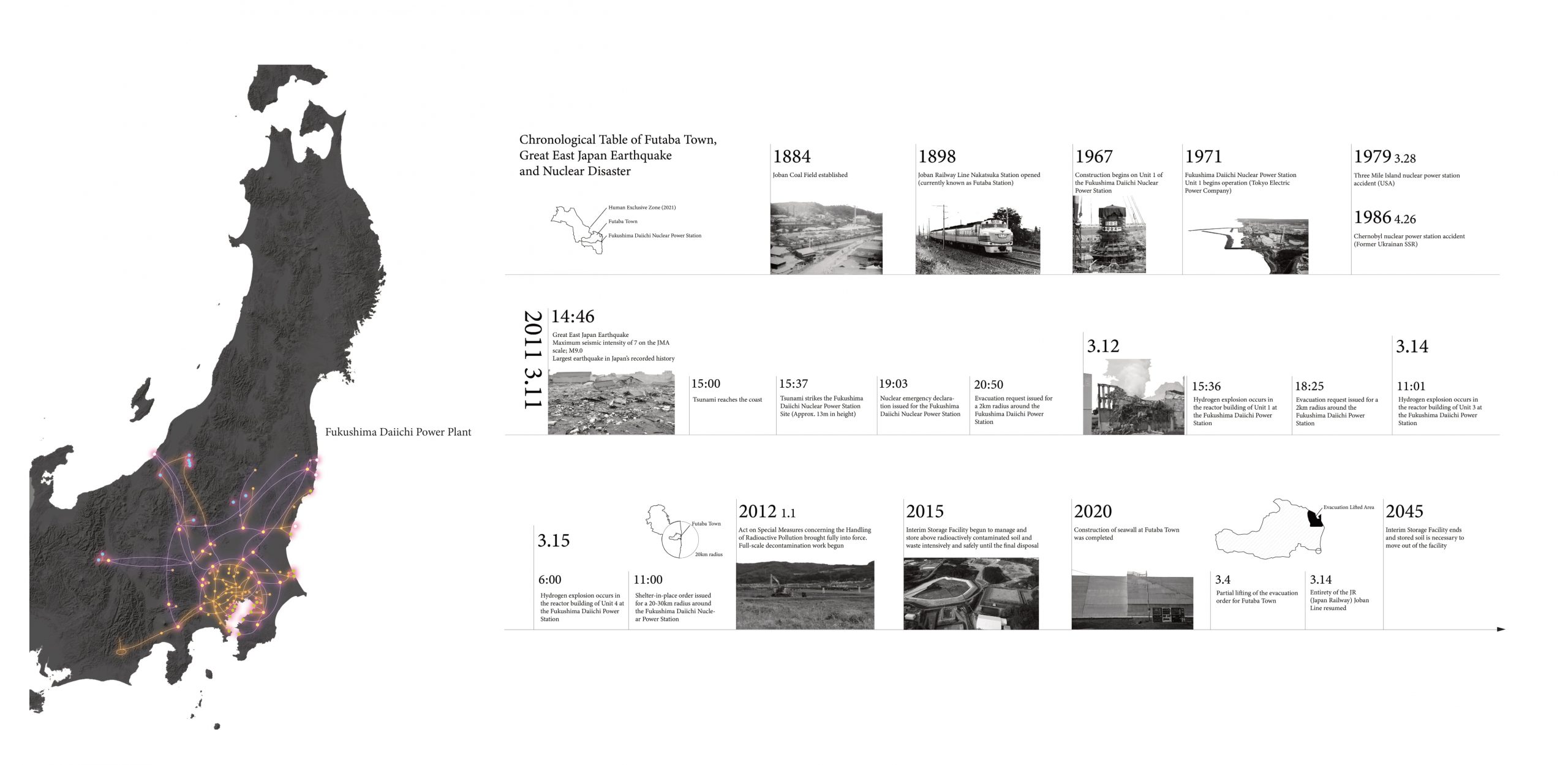


In Japan’s cultural history, sacredness is rooted in “terror.” This is because “terror” stems from uncontrollable phenomena. Therefore, the Japanese have tried to overcome the situation by worshipping them. For example, people pray to "Kami" (nature deities) for a harvest and escape from disaster since both of them are far beyond human power, so toxicity conferred by the catastrophe may make them sacred because it is dark, powerful in a more-than-human way, and out of bounds. My proposal is creating memorial forest with contaminated soil and abandoned material at the site. In the process of growth of the forest, it will have acquired sacredness. This is a memorial of abandonment and the reason for abandonment is sacred. Its design celebrates the messiness and aging.



The idea of borrowed landscape is used in order to reconnect people visually to the land even in this isolated condition. Look out features provides specific views. From the top, Visitor can see the ocean sealed by the seawall. The contrast between the development of city and forest represents the memory of the site. Existing black pyramids made of packed contaminated soils are converted to new sacred landscape to the town. Each mound is its own ecosystem and has its own planting palette due to its unique chemistry and shelters for different animals due to its different sized gaps. My proposal is creating a long pond from abandoned town zone to the ocean. This is the threshold between dairy life and the sacred journey. The pond is shaped by the edge of urban development and mountain. Water basically comes from the ground water in soggy soil but it is also connected to a river. Its inlet opens when the river is risen and this pond works as a stormwater reservoir. The mounds will be different in their slopes and heights. For example, stacked crushed cars will interlock in a different way from chunks of concrete—and the profiles they create will generate retaining walls of different shapes and types. Each mound has at least 1m of covering soil to keep pre-contaminated soil inside. Abandoned materials are not only structural but also exposed on the surface. Long pond provides waterfront area to the new town.

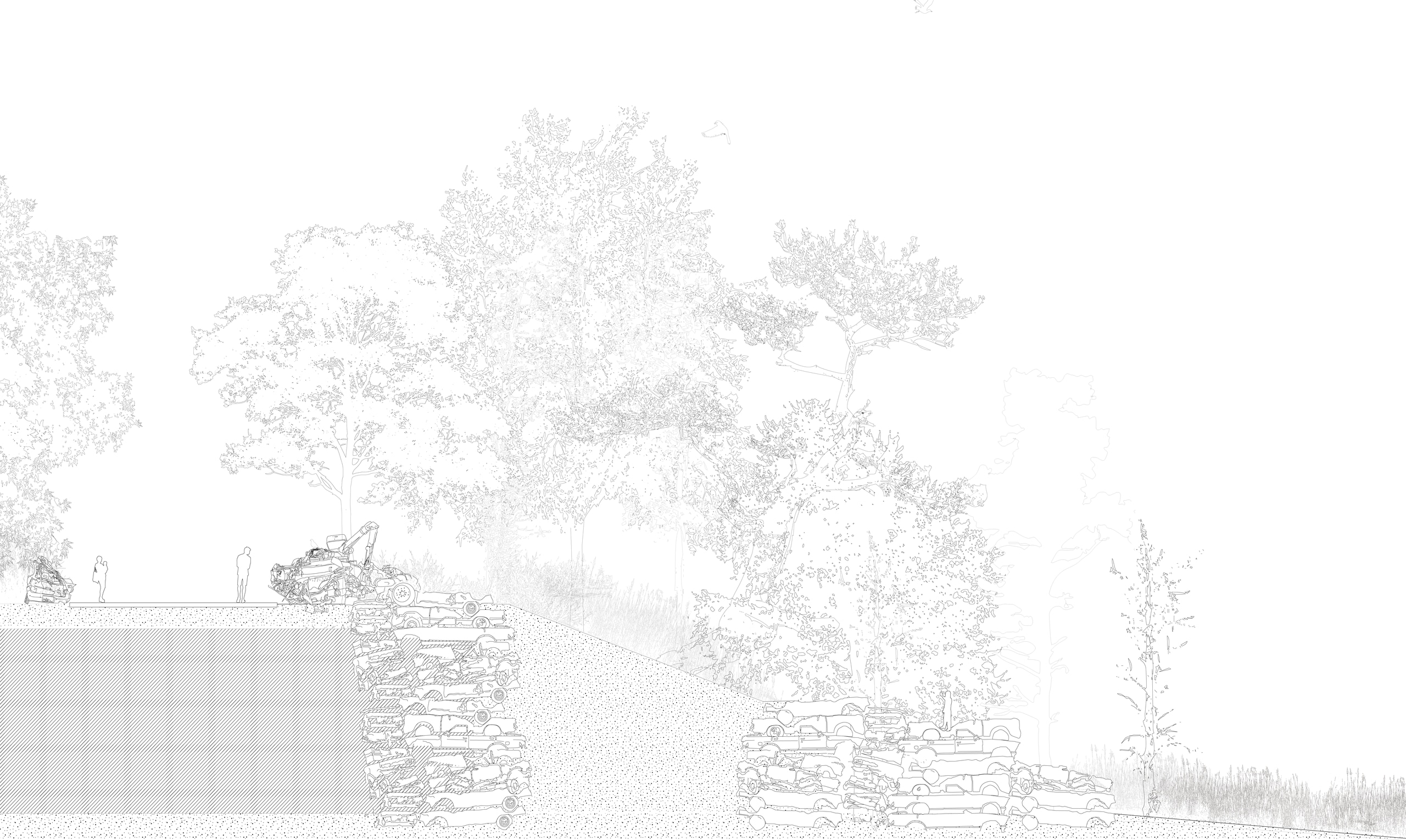
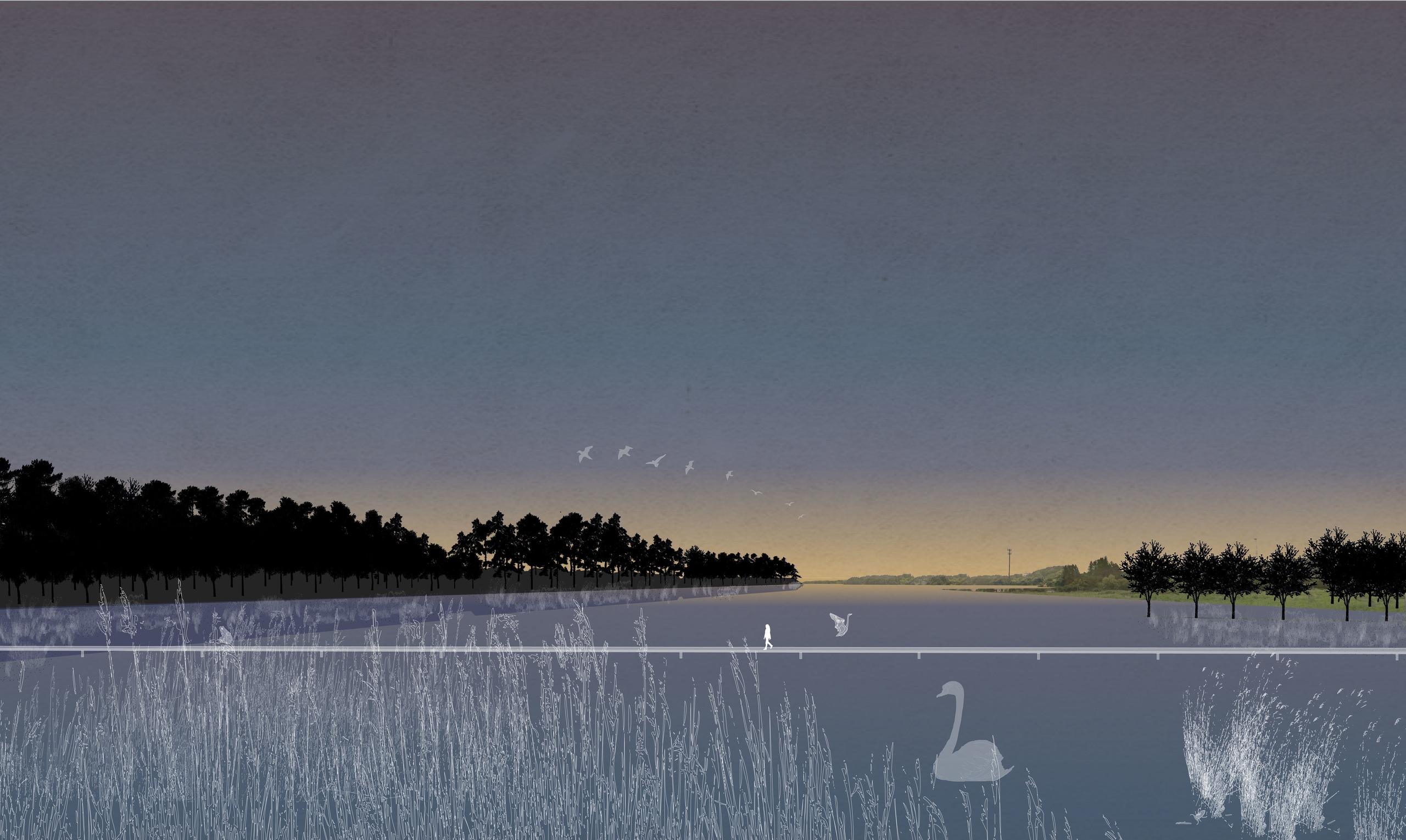

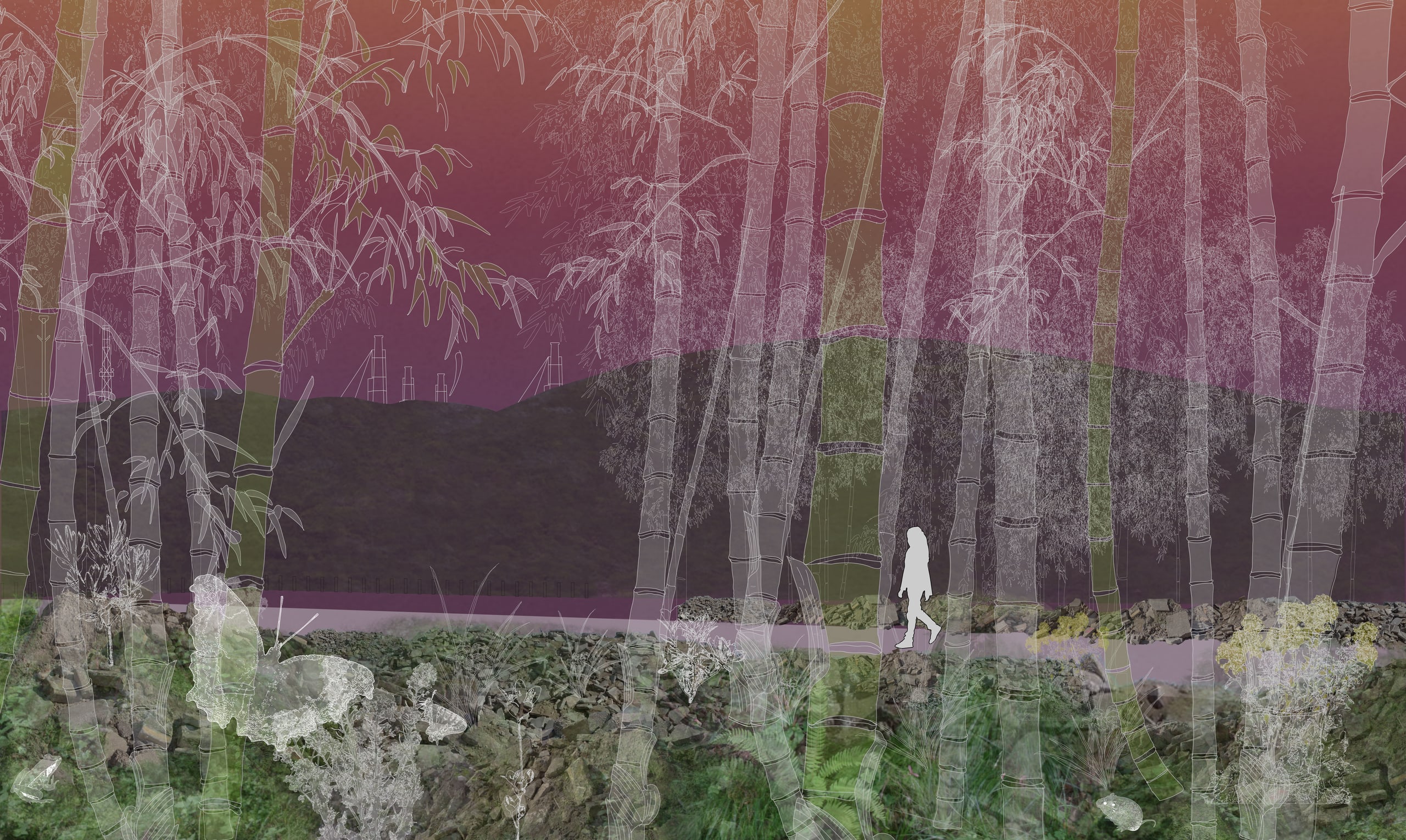
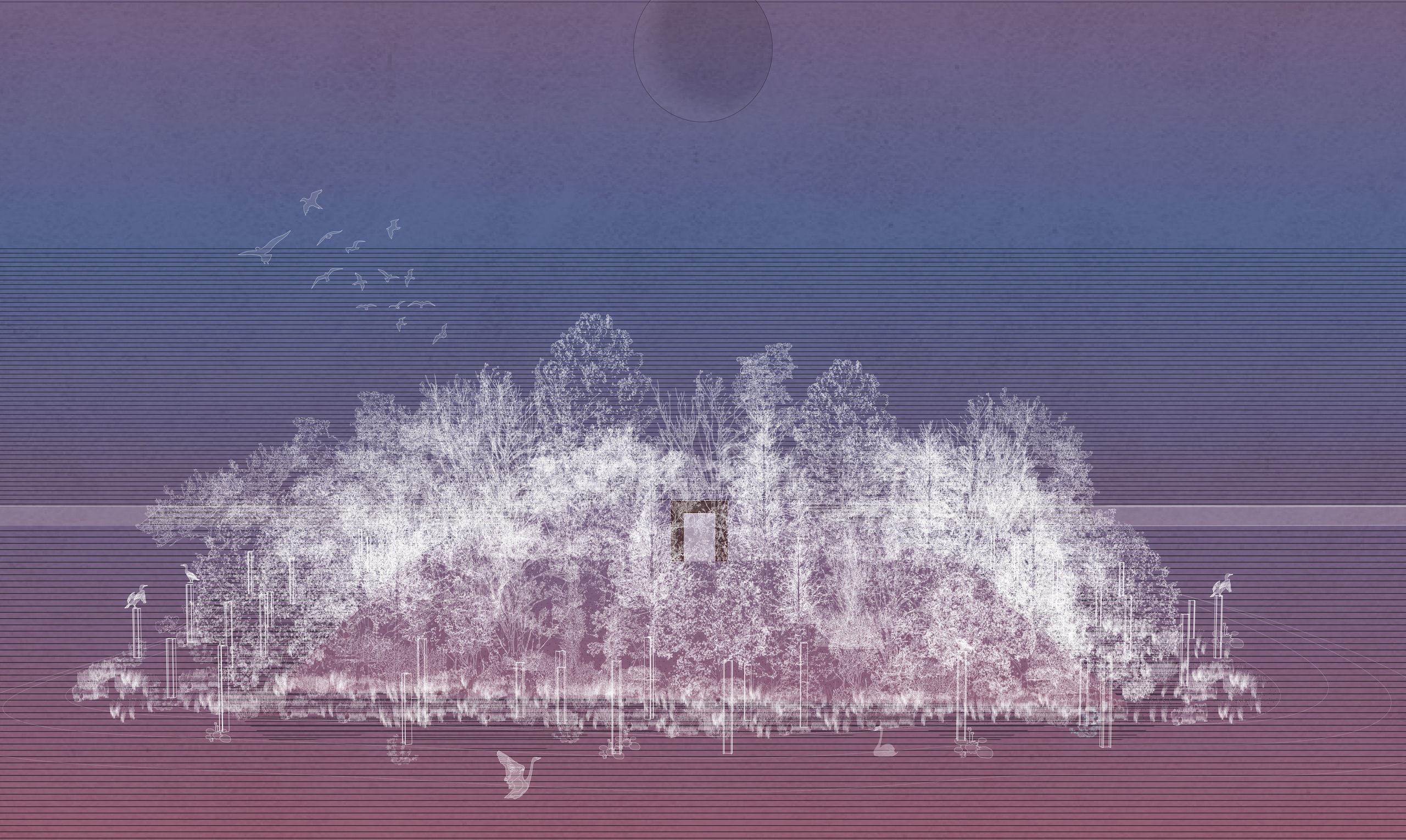
Memorial and Sacred Journey The journey begins with a gate. A board walk is ruining on the wetland and meadow area. A series of 90-degree angle paths prompt shaking off the dairy life. The boardwalk continues and crosses the pond. Before the sunrise, visitors can see birds flying to the paddy fields. Visitors climb the first mound with stairs. Items are exposed on the surface. Dark zone and light zone appear alternately during the journey. This directs experiential distance and lead visitors to Oku, deeper area. Kami might exist in each abandoned items or even a whole forest. Platform provides a view of the remnant of Fukushima Daiichi Nuclear Power Plant. A visitor looks out on to the landscape that still has potential for future disaster. Moss, weeds grow between the debris. From the top of the grave of wood, one can see the ocean through the final grave. The grave of metal is a sanctuary. A gate can be seen but it is never reached even after a hundred years. The ocean should be the final destination of this sacred journey because it is the origin of all of these situations. Through the journey to the mounds, a visitor reflects on the vulnerability of the landscape. It creates cultural situation processes not just experience of journey. It starts new cultural memory. I’ve created a place and a ritual procession that are rooted in tradition but that extend the idea of a sacred memorial into contemporary circumstances.


